“When I washed my steps with butter, and the rock poured me out rivers of oil;”
Job 29:6 (KJV)
“Let the good work go on. We must ever remember we are refining oil for the poor man and he must have it cheap and good.”
John D. Rockefeller
Discover the purpose of your work and your corporation
What is your purpose in work?
- You can transform Borneo’s petroleum industry through cutting-edge technology, thereby establishing a robust and competitive energy source.
- Your investments are geared towards creating fresh employment prospects, fostering economic growth, and elevating the living standards within the local communities.
What drives your corporation’s core value?
- Capture the new opportunity to invest in the emerging market and expand the company’s investment portfolio.
- Train and develop the skills and competency of the local oil and gas industry workers.
The Lucas Gusher Texas 1902
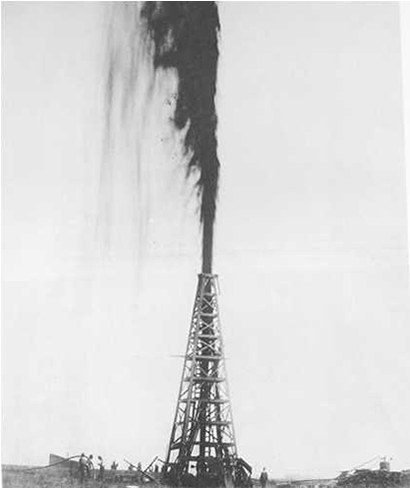
1.0 Executive Summary
Mission
- Entity: Form strategic alliance with government agencies, top global oil and gas groups, foreign investors, petrochemical manufacturers, local groups and form a new entity.
- Stage 1: Exploration and production. Target capacity = 1 billion barrels of oil reserve. Target crude oil production = 30 MMbbl/year.
Key Management Team
- Mentors: These are visionary pioneers and industry leaders with an extensive global network. They provide invaluable guidance and inspiration.
- Coaches: The coaches are mission-oriented industry experts who offer practical solutions to challenges, ensuring that the team remains steadfast in achieving its objectives.
- Partners:
- A project leadership group with a proven track record in developing, operating, and managing the petroleum industry.
- A reputable investment manager with access to funding sources within the petroleum industry.
- Government agencies that offer financial incentives and robust business support.
- A credible local petroleum developer with procurement capabilities, a strong local network, sound financial stability, and unwavering government support.
- Target market end-users, including petroleum importers and oil refineries.
Product Benefits
- Uses: The product has diverse applications as both a fuel and a feedstock, integral to daily life.
- Benefits: It not only serves as an economic catalyst but also enriches the lives of investors and local communities.
- Familiar: The industry and consumers are well-acquainted with our products and processes.
- Ease: The extraction, refining, and transportation processes are relatively safe and straightforward.
- Vital: The importance of our products is underscored by historical conflicts fought over its supplies.
Target Market
- Customers: The primary customers are large crude oil importers and refineries located in North Asia and India.
Financial projections
- Investment: Initial exploration investment = US$1.44 billion
- Cost: 900 MMbbl = US$18 billion
- Revenue: 900 MMbbl = US$36 billion
- Income: 900 MMbbl = US$18 billion
- Payback: 3 years (from 30 MMbbl production/year)

Unique Business Model
- Team: The specialised team has a consistent track record of success in performance, productivity, and financial returns.
- Barriers: Strategically erected high barriers to entry, including resource ownership, initial capital requirements, proprietary technology, and elevated operational costs.
- Location: Borneo’s unique location offers direct access to the Asia Pacific markets.
- Demand: Secured a robust demand channel through strategic alliance with end-user groups.
2.0 Mission
2.1 Problem
- Decline: Borneo is experiencing a decline in new exploration activity, with oil production dwindling as mature basins reach depletion.
- Investment: Foreign investors are hesitant due to uncertain financial returns and restrictive laws and terms that hinder fresh investments.
- Refinery: Existing refineries have limited capacity and lack modernization.
- Segmentation: There is a lack of downstream industries, limited exposure to global networks, and constrained access to international markets.
2.2 Solution
- Vision: The vision is to unite sovereign leaders and harness Borneo’s extensive oil and gas reserves, positioning it as the new oil and gas hub in the Asia Pacific.
- Plan: The strategic plan involves consolidating the current oil and gas infrastructure, promoting new exploration, increasing production, expanding refinery capacity, fostering new downstream industries, and attracting global investors.
2.3 Mission
- Entity: The mission is to form strategic alliances with government agencies, leading global oil and gas firms, foreign investors, petrochemical manufacturers, and local groups to create a new entity.
- Stage 1: Initially focus on exploration and production, targeting a capacity of 1 billion barrels of oil reserves and an annual crude oil production of 30 million barrels.
3.0 Product
3.1 Product Description
Petroleum: Petroleum, often referred to as “crude oil,” is a natural resource comprised of liquid oil and natural gas. The term “petroleum” originates from the Greek words “petra” and “oleum,” meaning “rock” and “oil.” Approximately 95% of petroleum consists of hydrocarbon molecules.
Uses: Petroleum, in the form of natural gas and oil, serves as a crucial energy source for various applications, including heating, cooking, electricity generation, and vehicle fuel.
Separator: Within the separator, gas extracted from underground reservoirs is directed to a processing plant, while crude oil is sent to a refinery. The gas is then separated according to its intended applications and transported to end-users.
Crude Oil: Crude oil is obtained by drilling into deposits and then pumped through pipelines. It undergoes refining, processing, and blending with other compounds to produce specific products tailored to various uses.
Segments: The range of oil and gas products includes petroleum gas, naphtha, gasoline, kerosene, diesel, gas oil, lubricating oil, fuel oil, coke, asphalt, tar, and wax. Downstream applications encompass a wide array of industries, including commodity and specialty chemicals, plastics, fertilizers, pesticides, pharmaceuticals, and solvent products.
Petroleum and gas formation
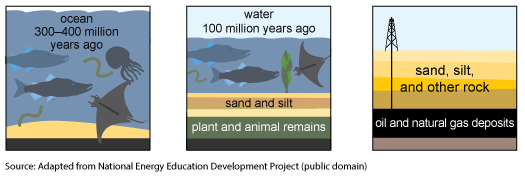
3.2 Product Attributes
Gas:
- High Energy Efficiency: Gas fuels are known for their remarkable energy efficiency. They deliver a consistent combustion temperature, ensuring optimal energy utilization.
- Clean Combustion: Gas fuels burn cleanly without emitting smoke or particulate matter.
- Versatile Applications: Natural gas plays a pivotal role in various industries, including:
- Chemical Industry: Used in the production of syngas.
- Energy Sector: Utilized in piston combustion engines, gas turbines, and generators.
- Construction: Employed in the production of glass, cement, and building ceramics.
- Metallurgy: Essential for heating furnaces in metallurgical processes.
Petroleum:
- Diverse Usage: Petroleum serves a multitude of purposes, such as:
- Transportation: As a primary fuel for vehicles.
- Heating: For residential and industrial heating systems.
- Electricity Generation: A vital source of energy in power plants.
- Construction: Used in asphalt and various construction materials.
- Feedstock: Petroleum and its derivatives are critical feedstocks for several industries, including:
- Chemicals: Used as a raw material in chemical production.
- Plastics: A key component in the manufacturing of plastic products.
- Pharmaceuticals: Employed in the production of pharmaceuticals.
- Personal Care: Found in various personal care products.
- Synthetic Materials: Used in the creation of synthetic materials integral to our daily lives.
Petroleum products
Petroleum uses
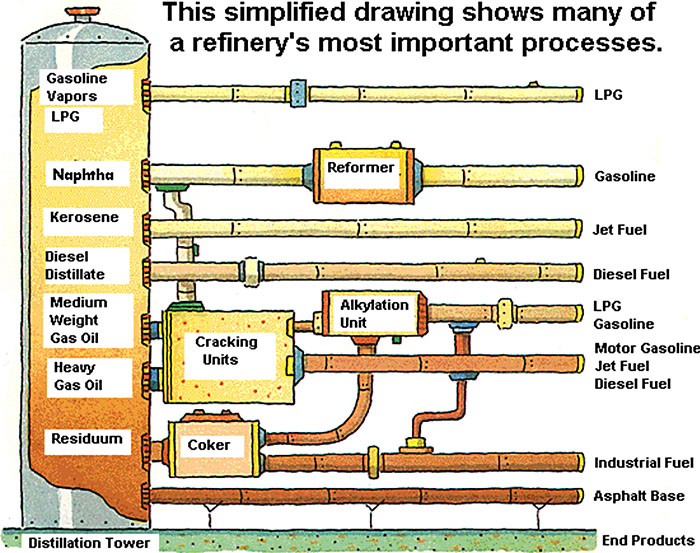

3.3 Product Benefits
- Versatility: The products serve as both fuels and feedstocks, integral to daily life.
- Economic and Social Impact: They bring economic prosperity and social well-being to investors and local communities.
- Familiarity: These products and processes are well-known to industry and consumers.
- Ease of Use: Extraction, refining, and transportation are safe and straightforward.
- Critical Importance: These products are vital, historically leading to conflicts over their supply.
Petroleum benefits
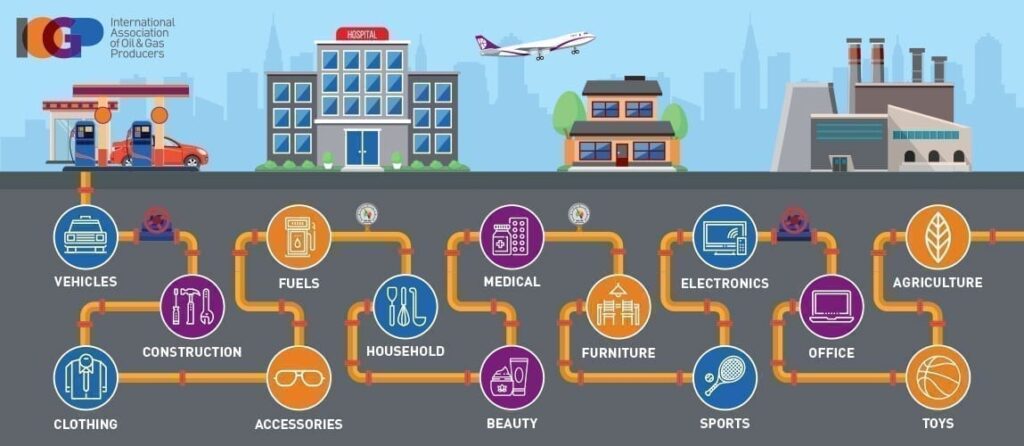
3.4 Product Competitive Advantages
- Expert Team: The stakeholders consist of leading specialists in the petroleum industry, ensuring unparalleled expertise.
- Technological Advancement: Partnering with international oil and gas groups improve cutting-edge technology, incresing productivity.
- Government Support: The issuance of licenses and permits to international petroleum groups fosters exploration and incentivizes risk and profit-sharing initiatives.
- Strategic Integration: Collaboration with downstream manufacturers ensures a successful approach to both vertical and horizontal integration, enhancing our competitive position.
4.0 Market
4.1 Market Segmentation
- Upstream: This segment encompasses activities related to exploration and crude oil production, focusing on the scope of Stage 1.
- Target Markets: The primary target markets include North Asia and South Asia.
Petroleum segments

4.2 Target Market Strategy
- Segment Focus: Stage 1 main activities include crude oil exploration and production.
- Strategic Partnerships: Forming key alliances with international petroleum groups, financiers, investors, end-users, and local entities to establish Borneo as the APAC oil and gas hub.
4.3 Market needs
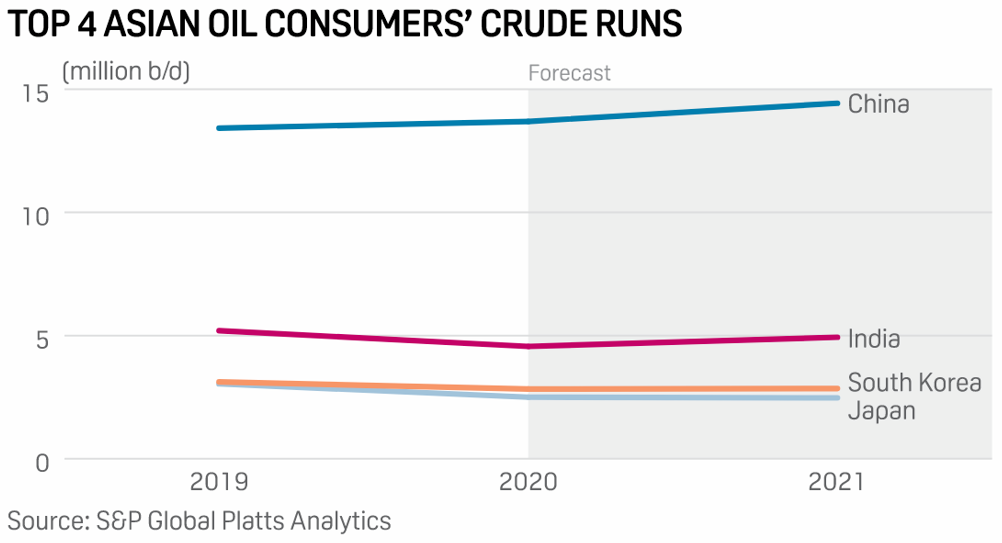
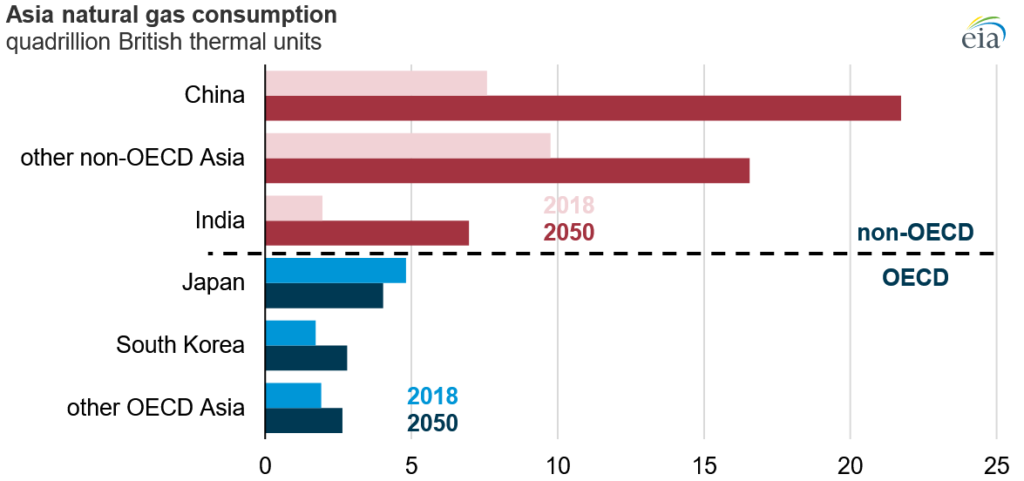
Indonesia’s production and consumption
Indonesia’s gas production and consumption
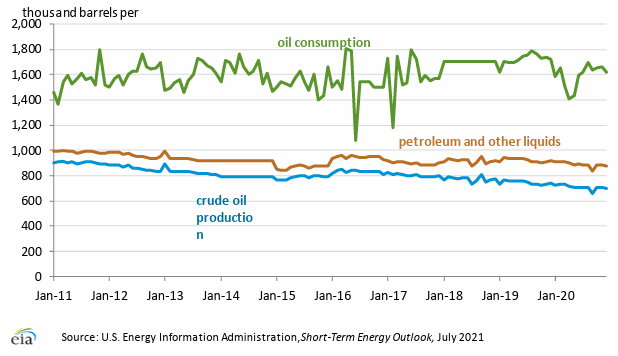
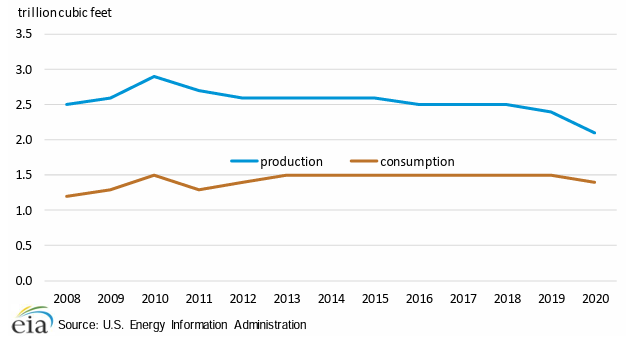
4.4 Growth Drivers
- Pipeline Expansion: The Indonesian government’s ambitious plans to enhance gas-processing capacity and triple the gas pipeline infrastructure by 2030, including projects in Kalimantan such as the 687-km Natuna-West Kalimantan, 1800-km West Kalimantan-Central Kalimantan, and 162-km Central Kalimantan-South Kalimantan pipelines.
- Industrial Development: The growth of downstream industries contributes significantly to our expansion.
- Increasing Demand: The rising demands of the middle class in the Asia Pacific region create substantial opportunities for growth.
4.5 Key customers
2019 oil exports
Country Export /bpd Main destination
Brunei: 107,000 Japan, Korea and India
Malaysia: 287,000 Australia, India and Thailand.
Indonesia: 68,000 Thailand, USA, Aust, Japan & S. Korea
Indonesia’s crude oil exports 2020
Indonesian LNG exports 2020
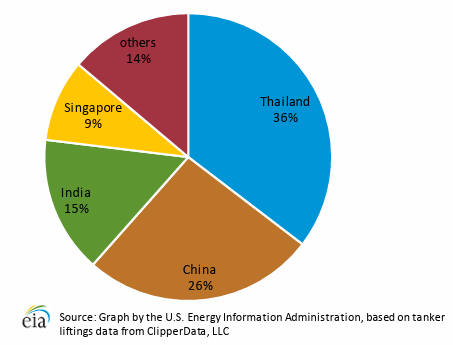
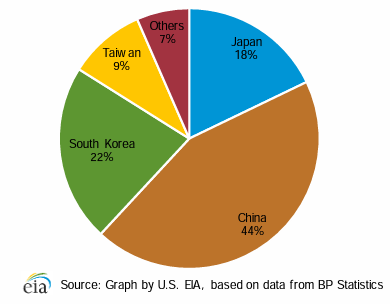
Source: EIA 2021
Source: EIA 2021
Natural Gas: Trade movements 2021 as LNG
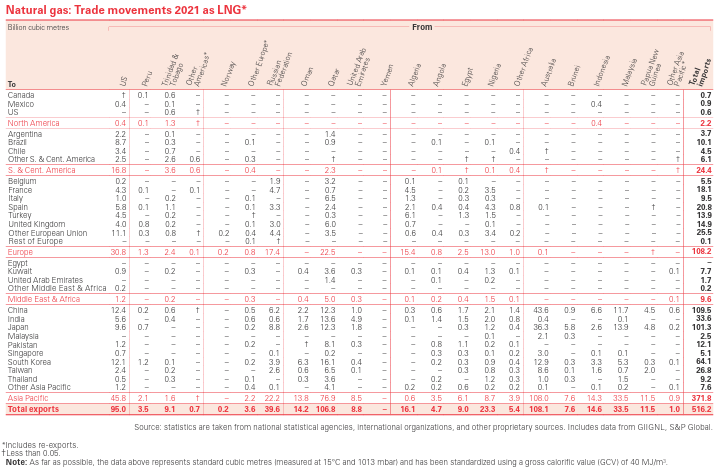
Oil trade the Asia Pacific


China imports of oil and gas projection
China refineries
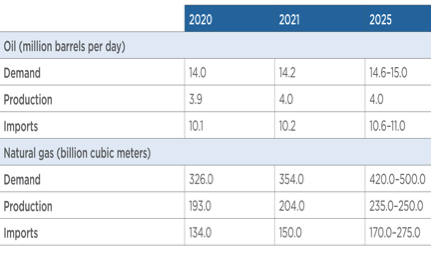
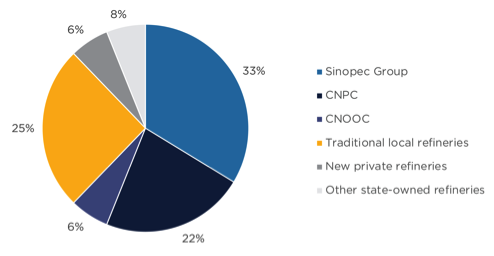
Source: Columbia SIPA. E. Downs 2021
Source: Columbia SIPA. E. Downs 2021
India’s largest oil refineries
Japan’s major refineries
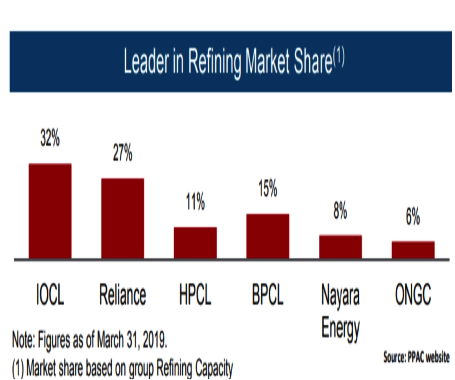
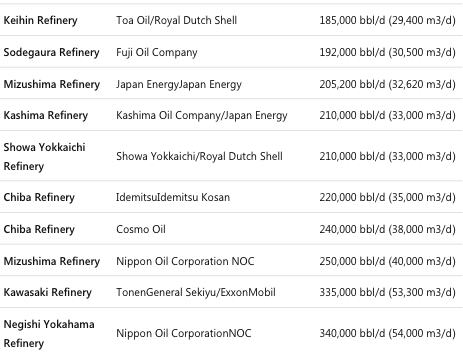
Source: Indiancompanies. Raveendran, 2022
Source: World List Mania 2021
Oil refineries in Indonesia 2020
Major Korean oil refineries

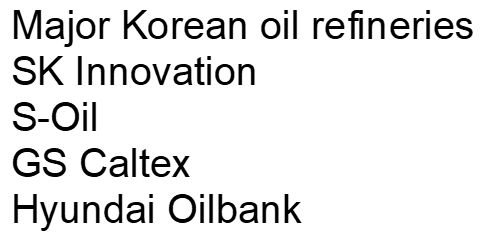
Source: EIA 2021
Source: Business Korea. MH Choi 2018
4.6 Competition and Industry
- Top petroleum companies by market cap 2021
2. Top petroleum companies by revenue 2020


Source: Companies Market Cap 2022
Source: Offshore Technology. Farmer 2021
3. Key Players in Borneo:
- Baker Hughes
- Brunei Shell Petroleum
- Chevron Pacific Indonesia
- China’s Hengyi
- CNOOC (China National Offshore Oil Corporation)
- ExxonMobil Cepu
- Halliburton
- Harbour Energy
- Medco Energi
- PetroChina International Jabung
- Pertamina
- Perusahaan Gas
- Petronas
- Petronas Carigali Ketapang
- Sabah Oil and Gas Development
- Sapura Energy Sarawak
- Schlumberger
- SMJ Petroleum
- Thiess
- Total
- Weatherford International
4. Top oil and gas producers in Indonesia
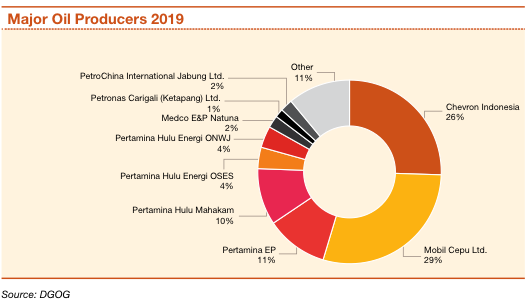
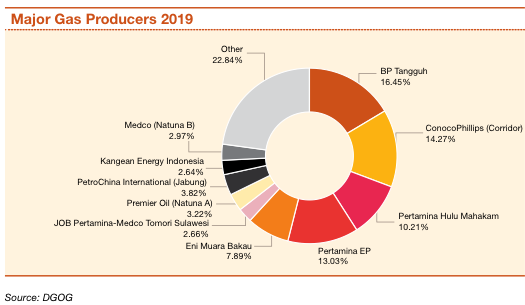
Source: PWC. 2020
5. Capacity
- Kalimantan: The Balikpapan refinery has a processing capacity of 360,000 barrels per day (bpd).
- Sabah: The Sabah refinery can process 300,000 bpd of oil and 1.25 billion cubic feet (bcf) of gas per day.
- Indonesia: Indonesia boasts a gas reserve of 103 trillion standard cubic feet (scf).
- Brunei: Brunei Shell Petroleum (BSP) has a production capacity of 300,000 bpd for oil and gas.
6. Malaysia petroleum reserve and production
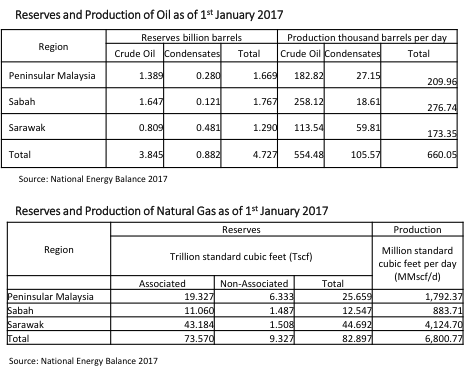
Source: Malaysia Energy Commission. Noor Karim 2019
7. Petrochemicals
- Kalimantan (East Kalimantan): Produces ammonia, urea, methanol, and ammonium nitrate.
- Brunei: Engages in methanol, ammonia, urea, and petroleum production, including jet fuel, diesel, gasoline, and LPG aromatic hydrocarbons.
- Sabah: Specialises in ammonia and urea production.
- Sarawak: Focuses on methanol, ammonia, urea, polyethylene, and polypropylene manufacturing.
5.0 Operation
5.1 Oil and gas extraction
5.2 Exploration and production activities

5.3 Types of gas wells
5.4 Petroleum exploration techniques
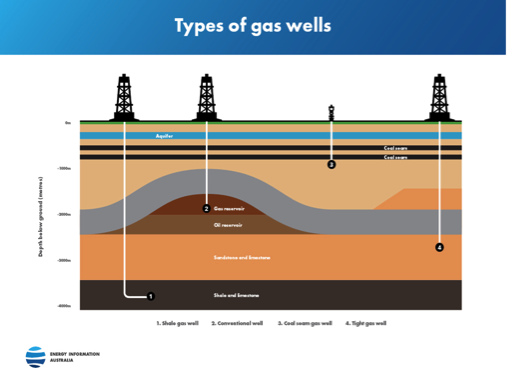
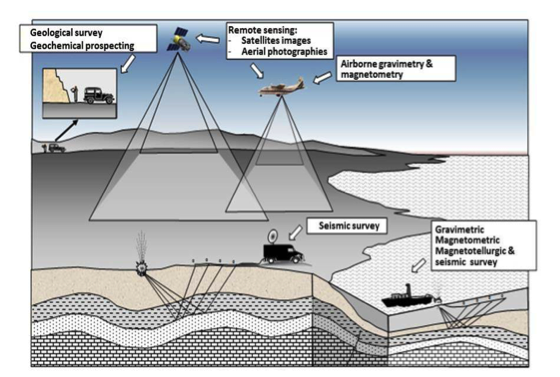
Source: Energy Information Australia. 2022
Source: Oil-Gas Portal 2022
5.5 Petroleum mid and downstream
5.6 Natural gas mid and downstream

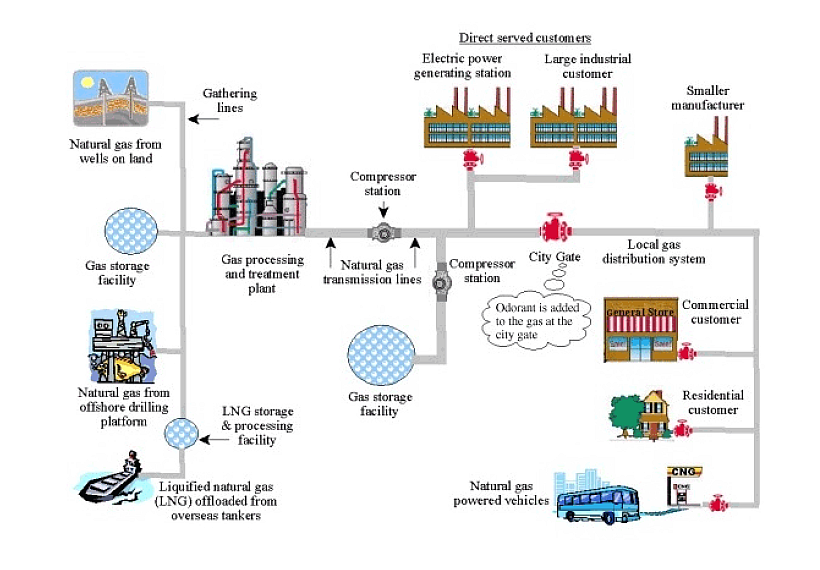
Source: Wikipedia / US Dept. of Trans. 2007
Source: Wikipedia / US Dept. of Trans. 2013
6.0 Financial Implications
6.1 Investment Segment
- Stage 1: Involves exploration and production in the upstream segment.
- Upstream Activities: Includes crude oil production from wells, requiring significant capital, modern technology, and inherent risks.
- Scope: Covers land acquisition, drilling, facilities, operating expenses, and transport costs.
- Capacity: Aims for 0.9 billion barrels of oil reserves.
- Well Life: Each well operates for 30 years.
- Production: Targets 30 million barrels annually.
- Wells per rig: 2 rigs X 30 wells drill/rig/year = 60 wells
- Production: 1,370 barrel/well/day
125 MMbbl Model Investment Breakdown:
- Preliminaries: US$21.1 million
- Exploration Well: US$7 million
- Appraisal Well: US$7 million
- Evaluation Cost: US$1 million
- Development Wells: US$7 million per well X 13 wells = US$91 million
- Completion Cost: 80% X US$91 million = US$72.9 million
- Total per Module: US$200 million
Total Exploration Investment:
To reach 900 million barrels of reserves, the total investment required is calculated as follows: 900 million barrels / 125 MMbbl X US$200 million = US$1.44 billion.
Case study 1: onshore well drilling & completion
Case study 2: E & P expenditure
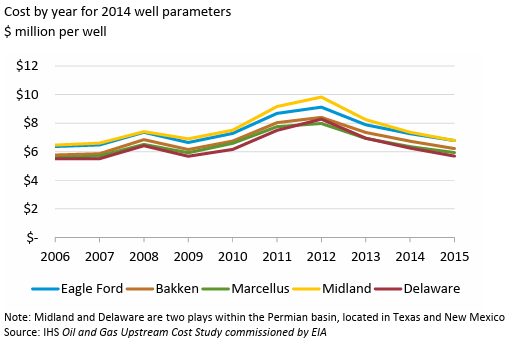
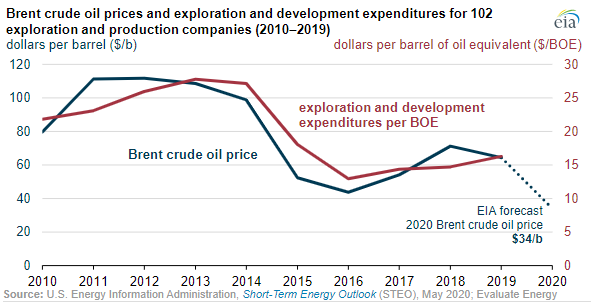
Source: US EIA 2016
Source: US EIA 2020
Case Study 3: Offshore / Gulf of Mexico / 2013
- Volume: 125 million barrels (MMbbl) of oil.
- Exploratory Well 1: Estimated cost of US$55–US$88 million, taking 110 days.
- Appraisal Well 1: Estimated cost of US$55–US$88 million.
- Plus Evaluation Cost: Totalling US$62–US$100 million, with a duration of 15 days.
- Development Wells: 13 wells, each costing US$55–US$88 million.
- Plus Completion Cost: 80% of US$99–US$158.4 per well.
Case Study 4: Offshore / Canada / 2019
- Exploration Well: US$90.9 million per well.
- Capital Expenditure (Capex): Ranges from US$5.2 to US$13.9 per barrel.
- Operating Expenditure (Opex): Ranges from US$7.8 to US$23.7 per barrel.
Case Study 5: From Various Industry Sources
- Oil Well Life: Typically spans from 15 to 30 years.
- Wells per Rig: Ranging from 20 to 40 wells drilled per rig per year.
- Production: Approximately 53,686 barrels per day per rig in the Asia Pacific region.
- Well Production: Varies widely, from 1 barrel of oil equivalent per day (BOE/d) to 12,800 BOE/d (barrels of oil equivalent per day).
- Average Well: Produces around 27.2 barrels per day of oil, or 34.7 BOE/d when considering both oil and natural gas.

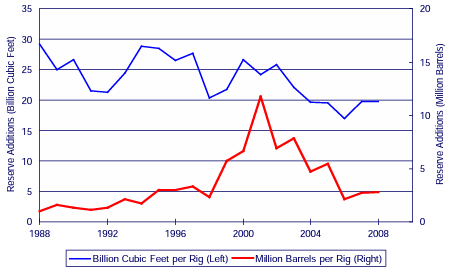
6.2 Cost of Production
Target Production Cost per Barrel:
- Capital Expenditure (Capex): US$10 per barrel
- Operating Expenditure (Opex): US$10 per barrel
- Total: US$20 per barrel
Yearly Production Cost:
- For a production of 30 million barrels:
- 30 MMbbl X US$20/bbl = US$600 million
Total Production Cost:
- To produce 900 million barrels:
- 900 MMbbl X US$20/bbl = US$18 billion
Case Study 1:
- Petronas Production Cost: US$6.8 per barrel (2017)
Case Study 2:
- Indonesia Production Cost: US$10 per barrel of oil equivalent (BOE) (2020)
Case Study 3:
- UKCS Operating Cost: US$15.16 per barrel (2020)
Case Study 4: Production Cost (2019):
- Saudi Arabia: US$10 per barrel
- The Middle East and Africa: US$20 per barrel
- World: US$30–US$40 per barrel
Case Study 5: Canada (2019):
- Capex: Ranges from US$5.2 to US$13.9 per barrel
- Opex: Ranges from US$7.8 to US$23.7 per barrel
Case study 6: Oil and gas production cost/barrel 2016
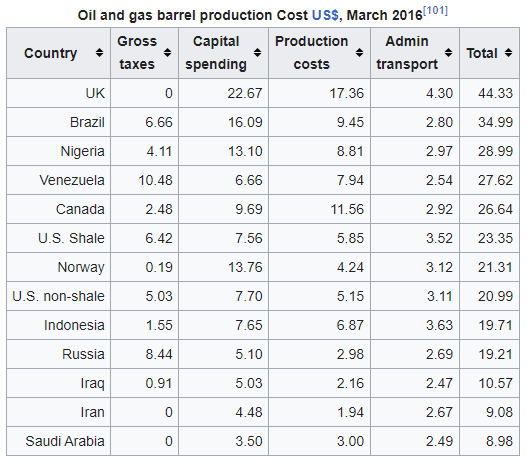
Case study 7: Cost of supply
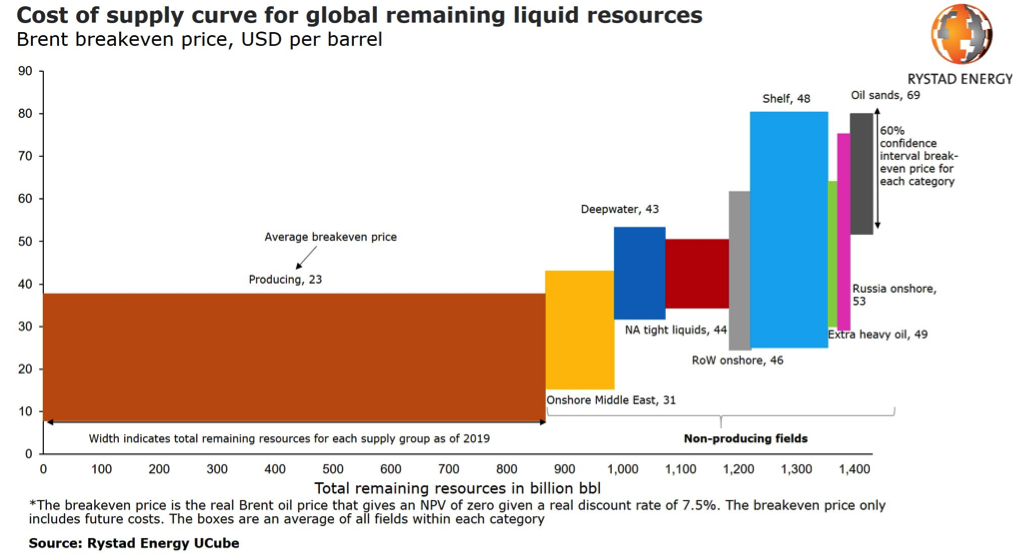
Case study 8: Indonesia operating costs and commercial reserve 2017

6.3 Price and Revenue
Target Crude Oil Price: US$40 per barrel
Yearly Revenue:
With a production of 30 million barrels per year: • 30 MMbbl/year X US$40/bbl = US$1.2 billion/year
Total Revenue:
• To produce 900 million barrels: • 900 MMbbl X US$40/bbl = US$36 billion
Case study 1: Crude oil prices 1861 – 2021
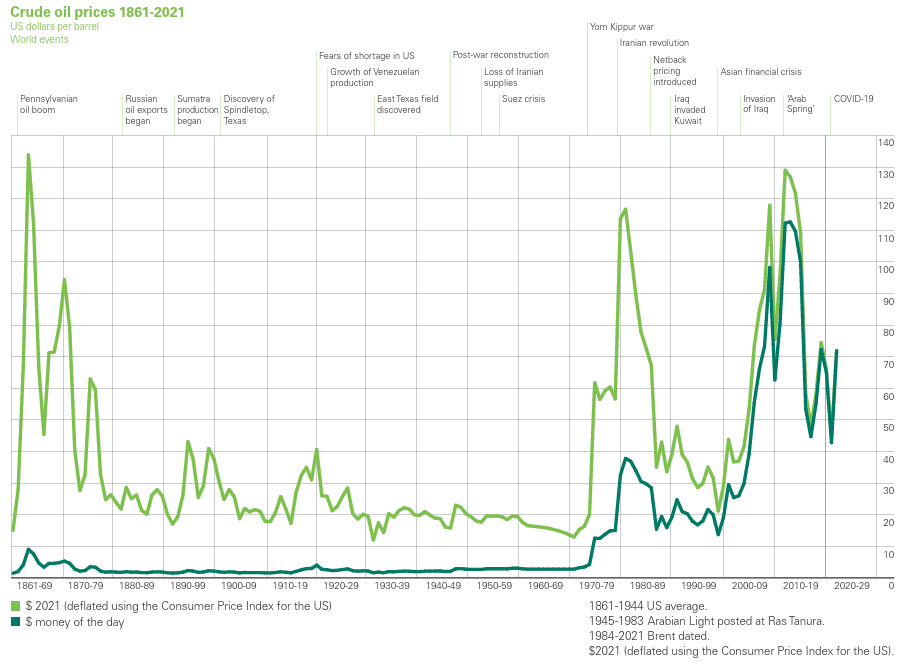
Case study 2: Gas prices 2003 – 2021

Case study 3: Oil prices in the US
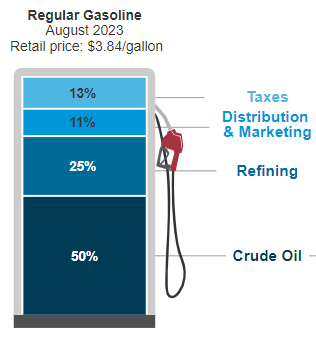
6.4 Financial Returns

Case study: Gross margins
Oil and gas production industry: 60%
Integrated oil and gas companies: 37.4%
Service and equipment companies: 33.9%
International Group: 2019 financial incomes
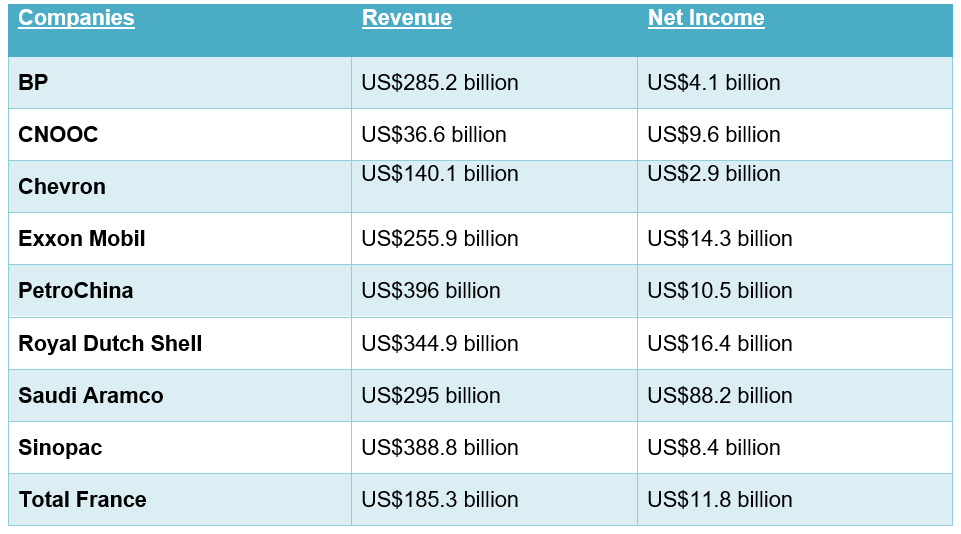
Local Group: 2019 financial incomes

6.5 Sources of Funding
1. Strategic Investors:
- New Investor: A project leader with a strong focus on business and financial management.
- Financier: Private equity firms specializing in petroleum investments and investor groups.
- Petroleum Operator: International and local petroleum developers and operators.
- Target Market: Oil refineries and oil importers from North Asia and India.
2. Private Equities and Investors
- ABN AMRO
- ACON Investments
- Aegis Energy Advisors Corp
- Amundi Asset Management
- APG Asset Management
- Apollo Global Management
- ARC Financial Corp
- Arcadius Capital Partners
- ArcLight Capital Partners
- Ares Management
- Arrowstreet Capital
- Assenagon Asset Management
- ATB Capital Markets
- Auria Capital
- Baillie Gifford
- Bain & Company
- Bank of America Merrill Lynch
- Barclays
- Barclay Pearce Capital
- Bayou City Energy
- BBVA
- Benefit Street Partners
- Berkshire Hathaway
- Blackgold Capital Management
- BlackRock
- Blackstone
- BlueRock Energy Partners
- Blue Water Energy
- BMO Capital Markets
- BNP Paribas Asset Management
- BOK Financial
- Brycap Investments
- Cadent Energy Partners
- Canada Pension Plan Investments
- Capital One Securities
- Capital Research & Management
- Carlyle Group
- Carnelian Energy Capital
- Cathay Bank
- CCMP Capital Advisors
- Chambers Energy Capital
- Charles Schwab Investment Management
- Chiron Financial
- CIBC
- Cibolo Energy Partners
- Citi
- Comerica
- Compagnia Investimenti e Sviluppo
- Coral Reef Capital
- Credit Suisse
- CVC Capital Partners
- Denham Capital
- Dimensional Fund Advisors
- Disciplined Growth Investors
- Eastspring Investments
- EIG Global Energy Partners
- EIV Capital
- EnCap Investments
- Energy and Minerals Group
- Fidelity Investments
- Fir Tree Capital Management
- First Trust Advisors
- Fisher Investments
- Fort Bay Capital
- Franklin Advisers
- Geode Capital Management
- GIC
- Global Infrastructure Partners
- GoldenTree Asset Management
- Goldman Sachs
- GQG Partners
- Hang Seng Investment Management
- Hermes Investment Management
- HitecVision
- Hotchkis & Wiley Capital Management
- Imperial Capital
- ING Capital
- JP Morgan
- Kayne Energy Capital Advisors
- Kerogen Capital
- KKR
- Legal & General Investment Management
- Lime Rock Partners
- Lyxor International Asset Management
- M&G Investment Management
- Managed Account Advisors
- Marshall Wace
- McKinley Capital Management
- Menora Mivtachim
- Mesquite Energy
- Morgan Stanley
- MorningStar Partners
- Norges Bank Investment Management
- Northern Trust Investments
- OnyxPoint Global Management
- OPTrust
- Pantheon International
- Partners Group
- Paulson & Co
- Pearl Energy Investments
- PGIM
- PJ Asset Management
- Pontem Energy Capital
- Post Oak Energy Capital
- Public Investment Fund (Investment Company)
- Pzena Investment Management
- Quantum Energy Partners
- RBC Capital Markets
- Renaissance Technologies
- Ridgewood Energy
- Riverstone Holdings
- Royal London Asset Management
- Schroder Investment Management
- SSgA Funds Management
- Teachers Advisors
- Thornburg Investment Management
- TIAA-CREF Investment Management
- TPG Capital
- UBS
- Vanguard Group
- Varde Partners
- Vontobel Asset Management
- Warburg Pincus
- Walter Scott & Partners
- Wellington Management
- Yorktown Partners
3. Consultants, Development, Procurement, and Industry Associations:
- American Petroleum Institute (API)
- Australian Petroleum Production & Exploration Association (APPEA)
- BCG
- Deloitte
- Energy Information Administration (EIA)
- Hart Energy
- Indonesian Petroleum Association (IPA)
- IHS CERA
- Institut Francais du Petrole (IFP)
- International Association of Oil and Gas Producers (IOGP)
- KPMG
- McKinsey & Co
- Nigerian Department of Petroleum Resources (DPR)
- Norwegian Petroleum Directorate (NPD)
- OPEC
- Petroleum Services Association of Canada (PSAC)
- Preqin
- PwC
- Rystad Energy
- Wood Mackenzie
6.6 Funding for Expansion Stages
- Stage 2 – Refineries:
- The funding for this stage would be allocated towards consolidating the existing refineries into a new, single refinery with a target capacity of 1.5 million barrels per day (Mbpd).
- Stage 3 – Petrochemical:
- For this stage, investments would be directed towards downstream industries, including specialty chemicals, agrichemical, and derivative products.
New joint refineries will lift Malaysia and Indonesia’s competitiveness in APAC
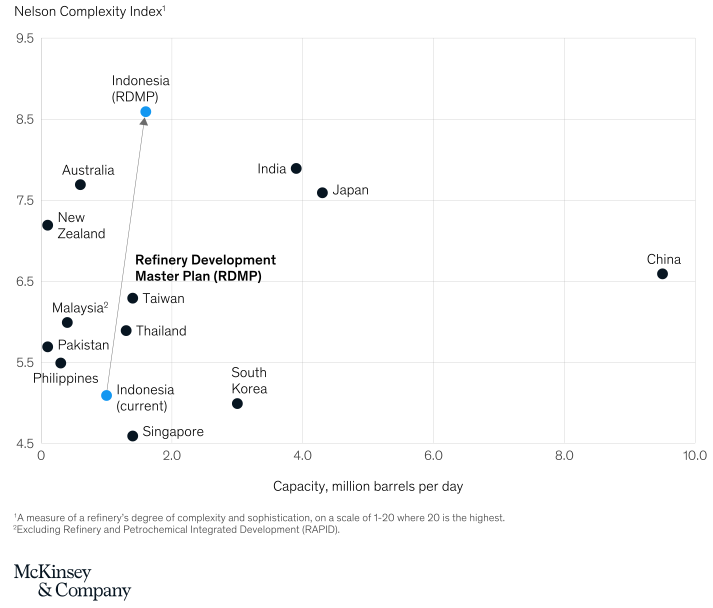
7.0 Management Team
7.1 Key Management Team
- Mentors: These are visionary pioneers and industry leaders with an extensive global network. They provide invaluable guidance and inspiration.
- Coaches: The coaches are mission-oriented industry experts who offer practical solutions to challenges, ensuring that the team remains steadfast in achieving its objectives.
- Partners:
- A project leadership group with a proven track record in developing, operating, and managing the petroleum industry.
- A reputable investment manager with access to funding sources within the petroleum industry.
- Government agencies that offer financial incentives and robust business support.
- A credible local petroleum developer with procurement capabilities, a strong local network, sound financial stability, and unwavering government support.
- Target market end-users, including petroleum importers and oil refineries.
In the oil and gas industry, several global leaders have made significant contributions, shaping its growth and success. Here is a list of some of these remarkable individuals, honoured for their vision and dedication:
These are just a few of the outstanding professionals and captains of the industry. The readers are encouraged to explore further and conduct their research to learn more about the management teams in this dynamic field.
7.2 Key Management Team Model
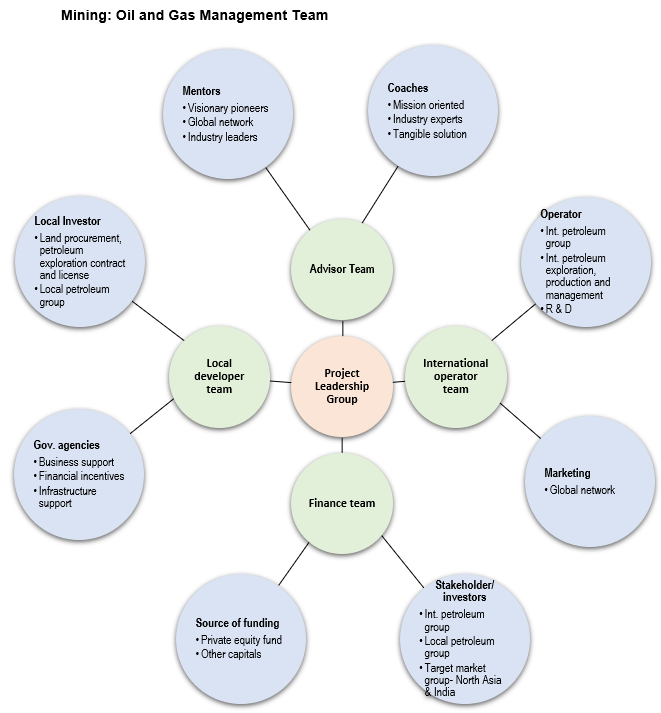
8.0 Unique Business Model
8.1 Successful Track Record
- Selection of the new oil and gas group is based on:
- Effective management team members.
- Solid sources of finance and financial management specialists.
- Advanced technology in upstream, midstream, and downstream operations.
8.2 Entry Model (Upstream)
- Entry options into the upstream segment include:
- Establishing a new entity through a strategic partnership with an established international petroleum conglomerate in exploration and production.
- Acquiring or jointly developing with a local group holding exploration and production rights.
8.3 Unique Business Model’s Competitive Advantages
- The unique business model offers several competitive advantages:
- Team: A specialized team with a proven track record in performance, productivity, and financial returns.
- Barriers: Creation of high barriers, including resource ownership, start-up costs, proprietary technology, and high operating costs.
- Location: Direct access to the Asia Pacific markets.
- Demand: Securing demand through strategic alliances with end-user groups.
9.0 Key Success Factors & Risk Mitigation
9.1 Key Success Factors
- Improve refining system operations.
- Maintain technological edge.
- Increase capacity.
- Enhance marketing and sales management in the target industry.
9.2 Risks
- Local industry lacks financial and technical capacity for efficient refining and distribution.
- Oversupply of shale oil, reduced demand due to COVID-19.
- Falling oil prices affecting financial returns.
- Flat upstream costs in a competitive environment.
- Pressure on local petroleum companies to contribute to fiscal budgets and social programs.
9.3 Risk Mitigation
- Encourage foreign investment in upstream infrastructure with improved risk allocation and fiscal incentives.
- Consolidate stronger teams through strategic alliances.
- Reduce costs through integration and maintain financial discipline.
- Streamline downstream operations and position Borneo as a hub for refining and downstream production.
- Collaborate with international groups for effective exploration, production, new products, marketing, and sales.
10.0 Exit Strategy
10.1 Forms of Exit
- Exit options include IPO (Initial Public Offering), buy-out, M&A (Merger and Acquisition), and transfer.
10.2 Key Attractions for New Investors
- Portfolio: Investment in petroleum projects offers diversification in an emerging market.
- Demand: Partnerships with end buyers ensure stable demand.
- Barrier: High entry barriers due to substantial investment costs.
- Cost: Cost consolidation through new project acquisitions.
- Growth: Opportunities for growth in an emerging market.
- ESG: Commitment to responsible corporate ESG (Environmental, Social, Governance) with a purpose-driven investment approach.